
 |
Eager Space | Videos by Alpha | Videos by Date | All Video Text | Support | Community | About |
|---|

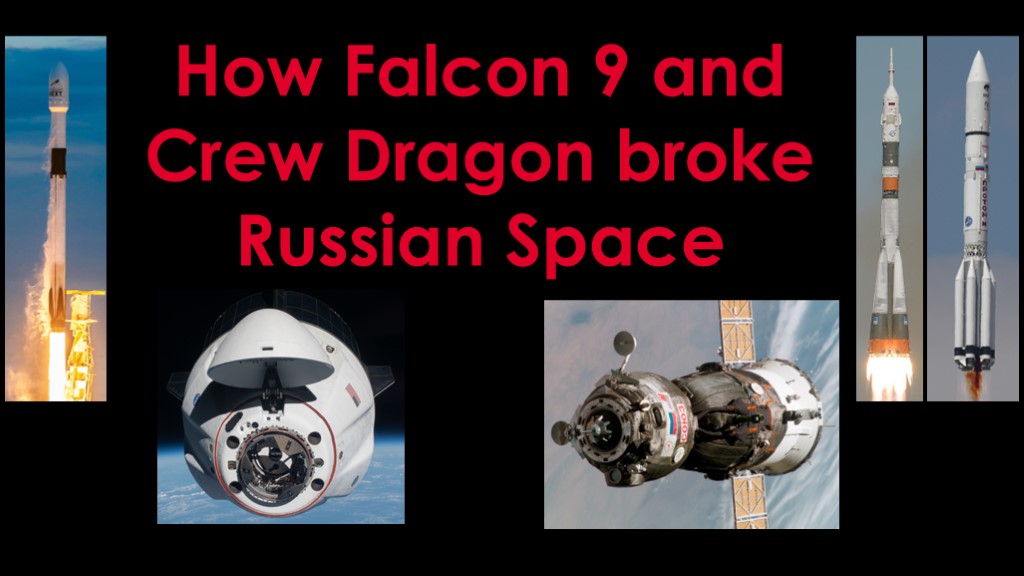
In the early 2010s, Russian commercial space was flying high. They were doing a lot of business and bringing in a lot of money.
Then something happened that would break their once vibrant program.

We'll start by looking at the state of the Russian space program from 2010 through 2014
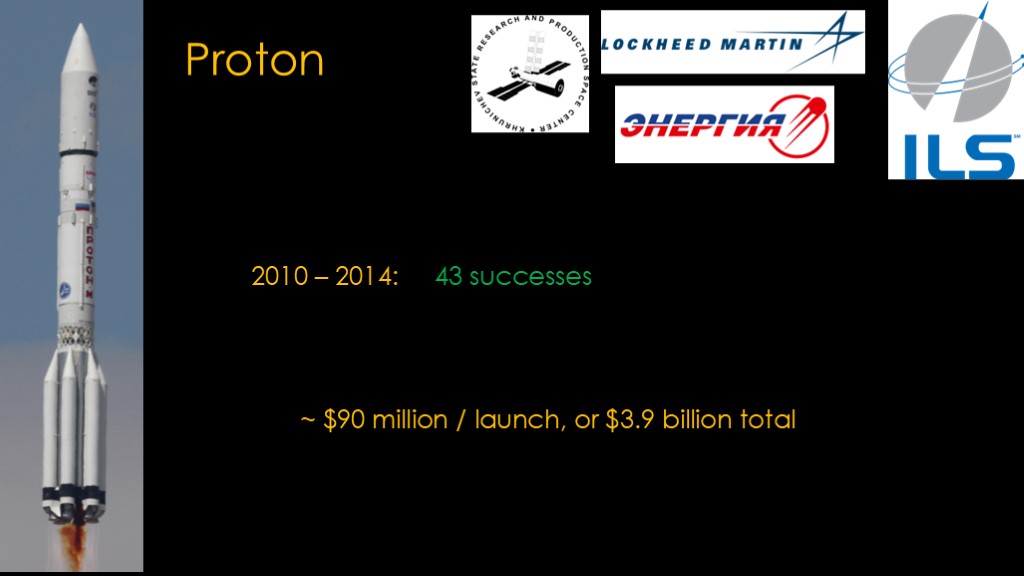
The Proton rocket was their workhorse launcher for commercial satellite launches.
From 2010 to 2014, they had 43 successful launches. A rough guesstimate for the cost is around $90 million per launch, or $3.9 billion total for this 5 year period. Note that actual launch prices are usually confidential, so these are just estimates.
International proton launches are sold by international launch services, a joint venture of Lockheed Martin (LM) in the United states and Khrunichev and Energia in Russia, and there is likely some overhead to that arrangement, so the money going to Russia will be less than these numbers
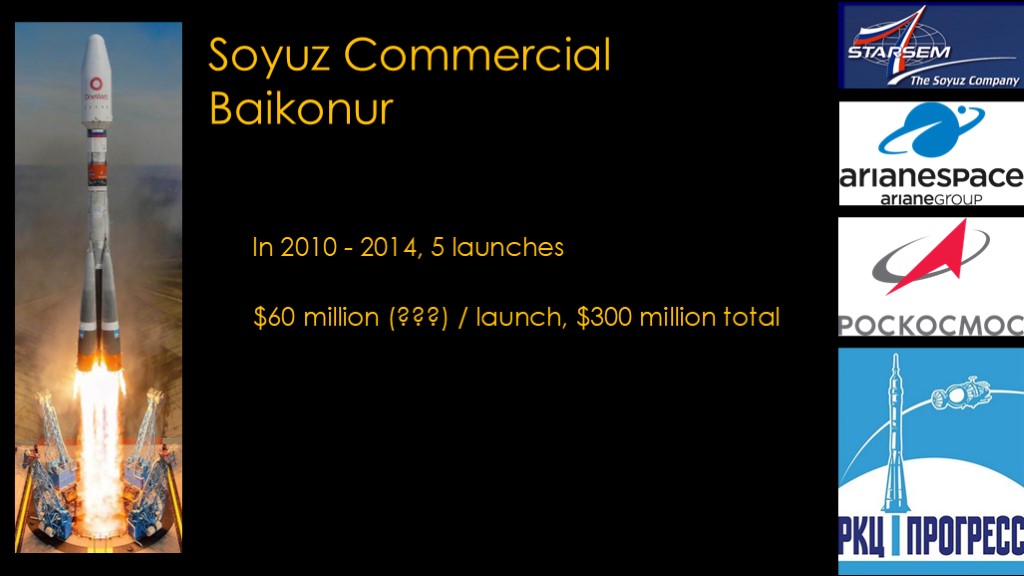
Russia sells commercial launches using the Soyuz launcher out of the Baikonur launch site in Kazackstan.
Once again, there is a joint venture at work; Starsem is a joint venture with Arianespace, Roscosmos, and Progress Rocket Space Center.
In 2010 through 2014, they performed 5 commercial launches, at a very rough estimate of $60 million per launch.
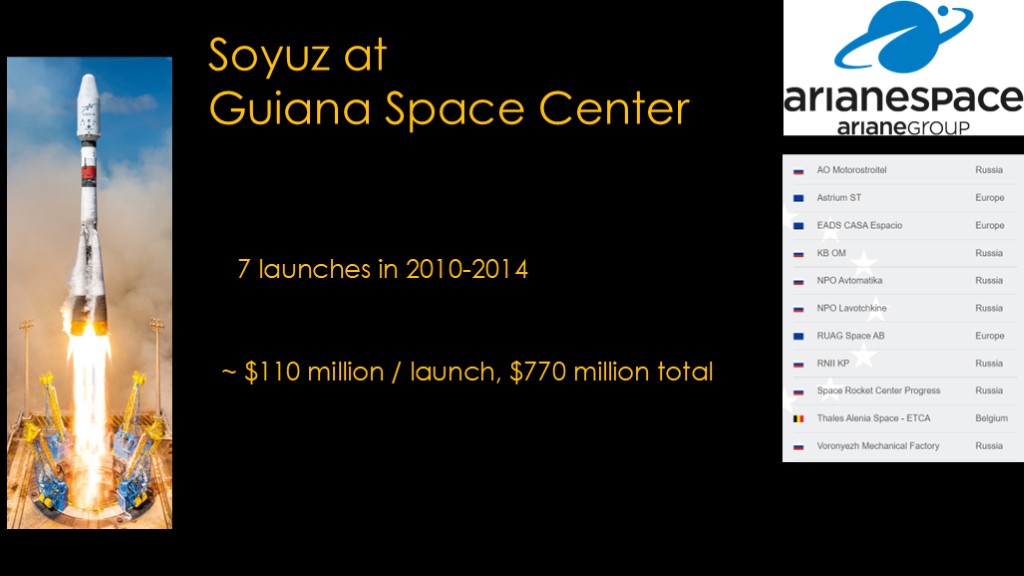
In 2011 Arianespace added a program to launch Soyuz rockets from Guiana Space Center in French Guiana.
This launch site is nearly at the equator and that allows them to launch to orbits that would not be reachable from Baikonur
They did 7 launches from 2010 through 2014 at around $110 million per launch, or $770 million total
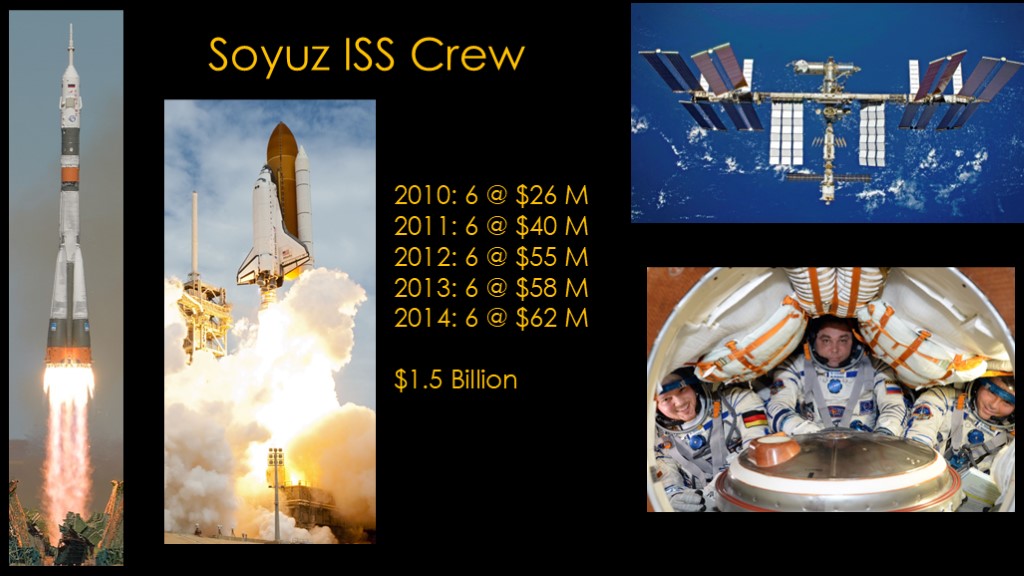
With the retirement of the Space shuttle, NASA had no way to way to get astronauts to the International Space Station, so they starting buying seats in the Russian Soyuz capsule.
During this time period, NASA bought 6 seats every year for prices that went up over time, costing a total of $1.5 billion dollars.
https://oig.nasa.gov/docs/IG-20-005.pdf
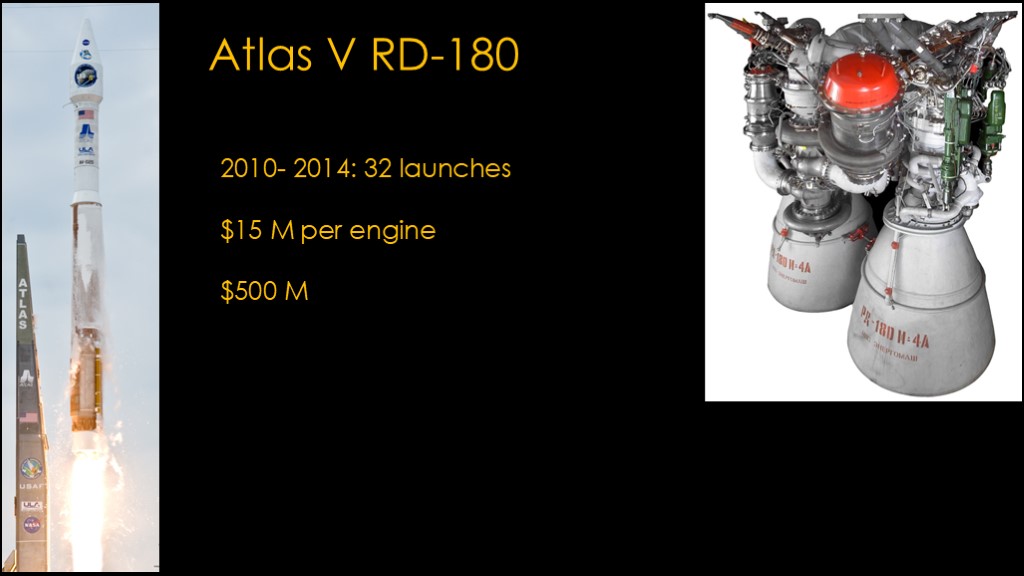
Finally, the Atlas V rocket launched by ULA uses the excellent Russian RD-180 engine.
The Atlas V flew 32 times during that period, and at an estimated cost of $15 million per engine, that's $500 million dollars total.
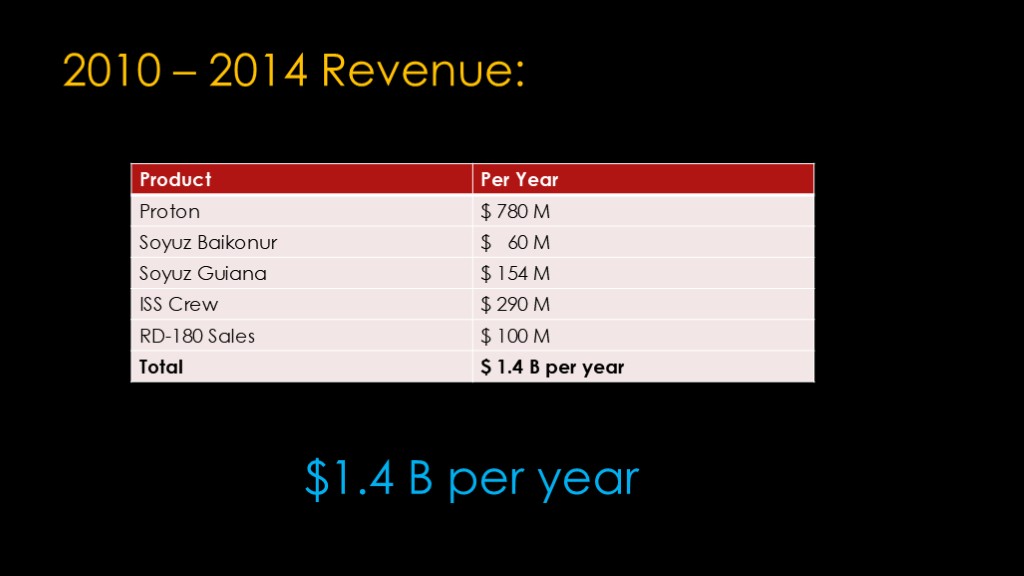
If we add all of those up, we get around $1.4 billion per year.

It's important to note that the money collected is what is known as hard currency, as these costs are paid for in strong currencies such as US dollars, Japanese Yen, or Euros.
The Russian Ruble is not considered to be a hard currency; it is less desirable.
This means that the money from these services makes it easy for Russia to buy products on the world market.

Now we'll roll forward to the present day.
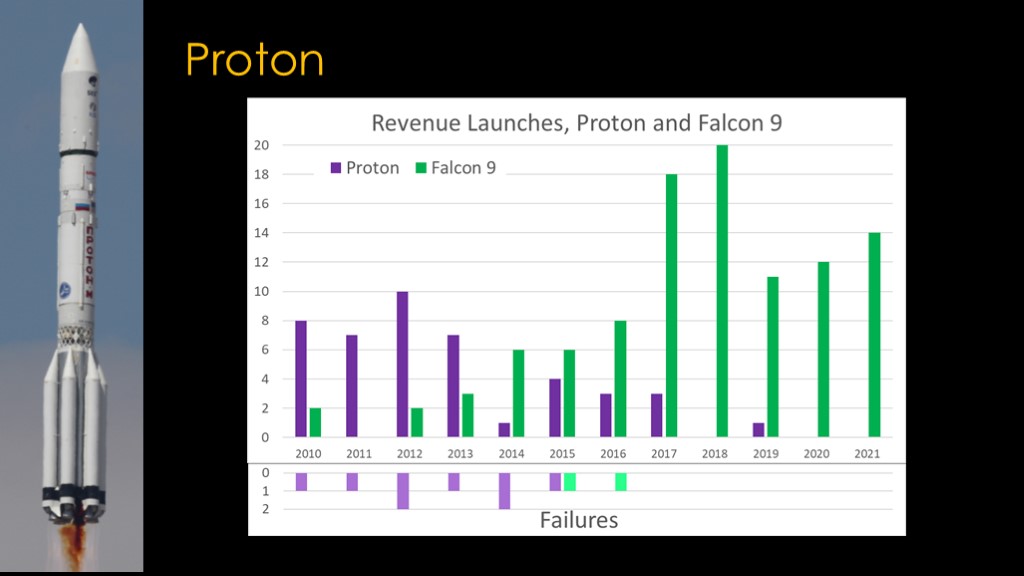
This graphs shows the Proton launches in purple and the SpaceX commercial launches in green. As you can see, as soon as Falcon 9 was flying regularly, most of the commercial business for Proton dried up, with only 1 commercial launch in the last 4 years.
It's not just Falcon 9, however; if we look at failures we can see that proton had a string of failures these years.

Including this notable one
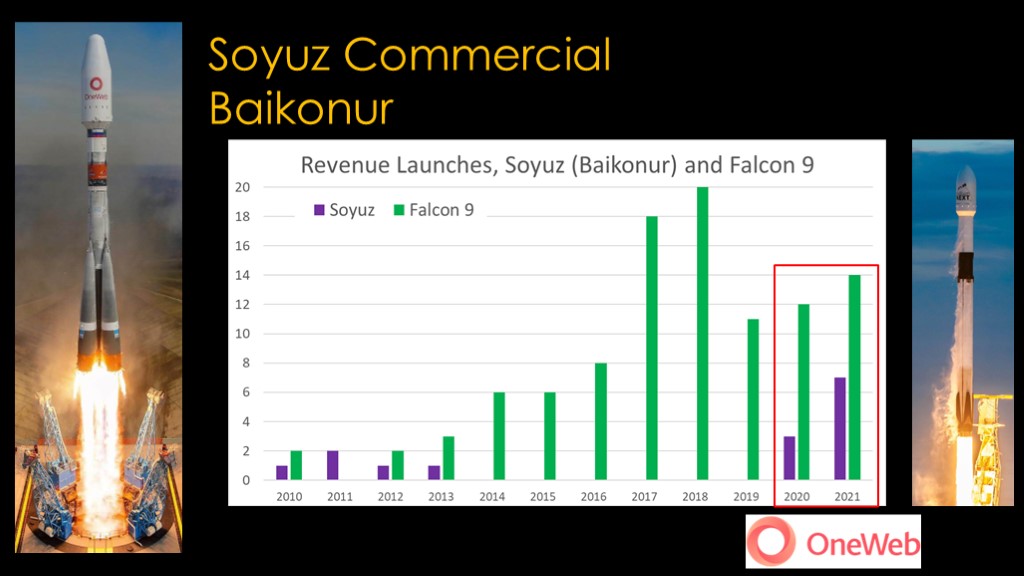
Here's the history of commercial Soyuz launches from Baikonur. The program was largely dead until a rebirth in 2020, as OneWeb bought a number of launches for their constellation. Presumably OneWeb chose Soyuz over Falcon 9 because SpaceX's Starlink competes with OneWeb's constellation.
The Russians have recently chosen not to honor the contract for future OneWeb launches, and those launches will be instead be done by Falcon 9.
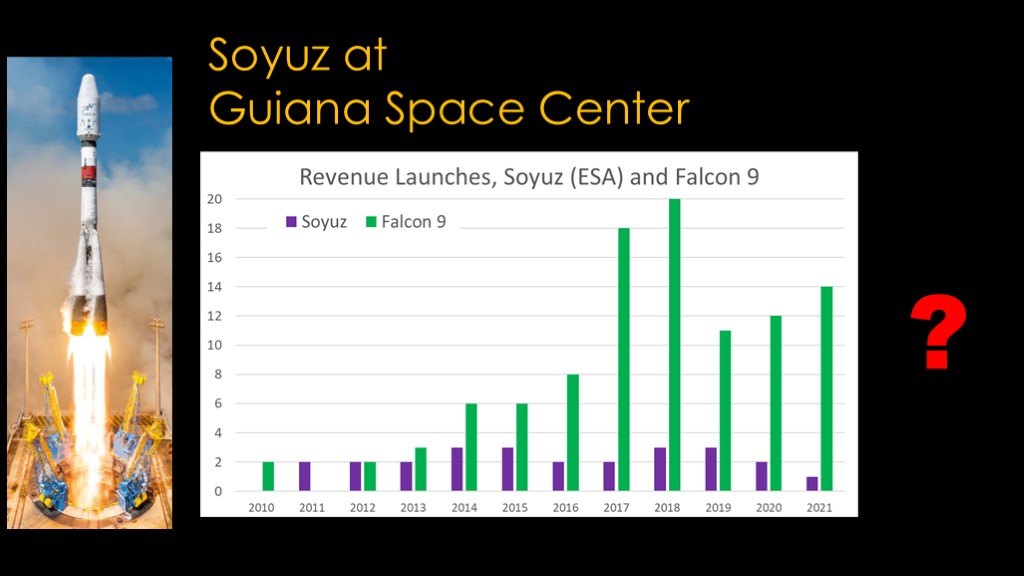
The Soyuz launches by ESA in Guiana have been steady since the start of the program in 2011. The majority of these launches were for European governments payloads.
There is a huge question mark going forward, as Russian has suspended these launches.
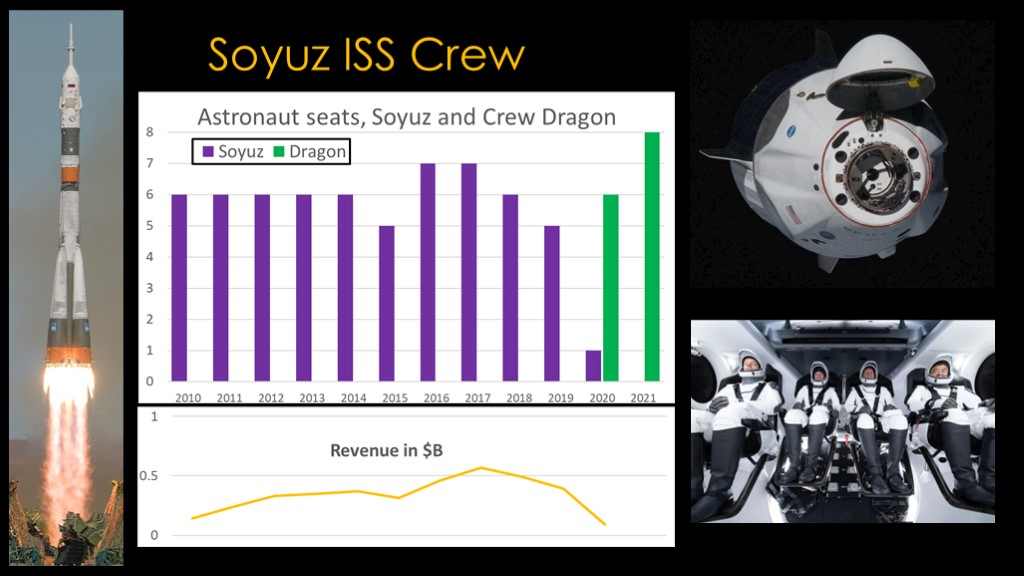
NASA fairly consistently bought 6 seats per year until crew dragon was ready, and then those seats and the revenue disappeared.
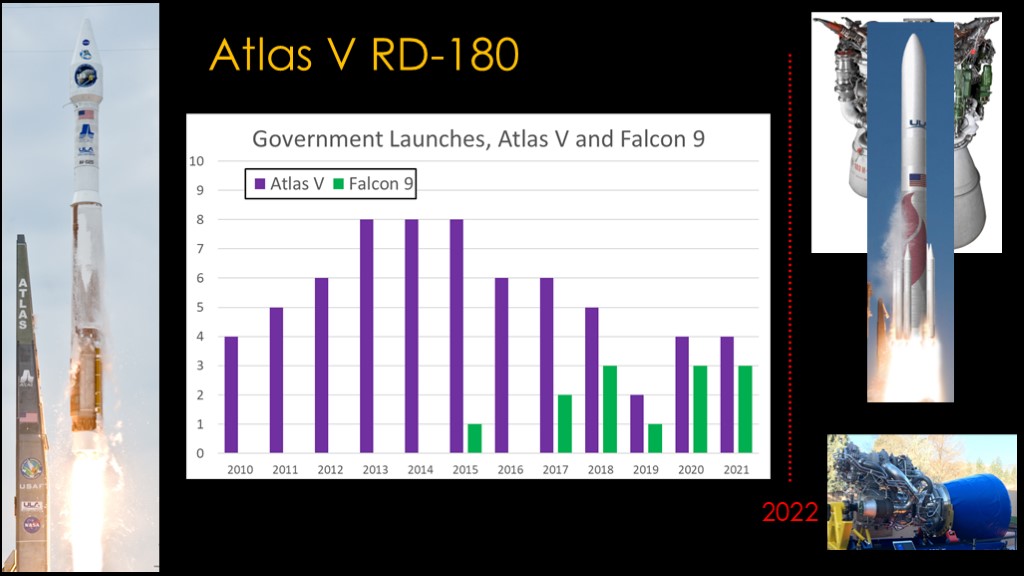
This chart looks at NASA and department of defense launches for Atlas V and Falcon 9. Each of the Falcon 9 launches is one less RD-180 engine that Russian sells to ULA.
The reliance on Russian engines has been the subject of much debate in the US government and a lot of weaseling around trying to come up with a policy. Currently there is a requirement that no bids after 2022 can use the RD-180, but in early 2022 Russia announced an end to sales and support of the RD-180 (fade out RD-180).
ULA will be replacing the Atlas V with the Vulcan, which is currently waiting on the delivery of BE-4 engines from Blue Origin.
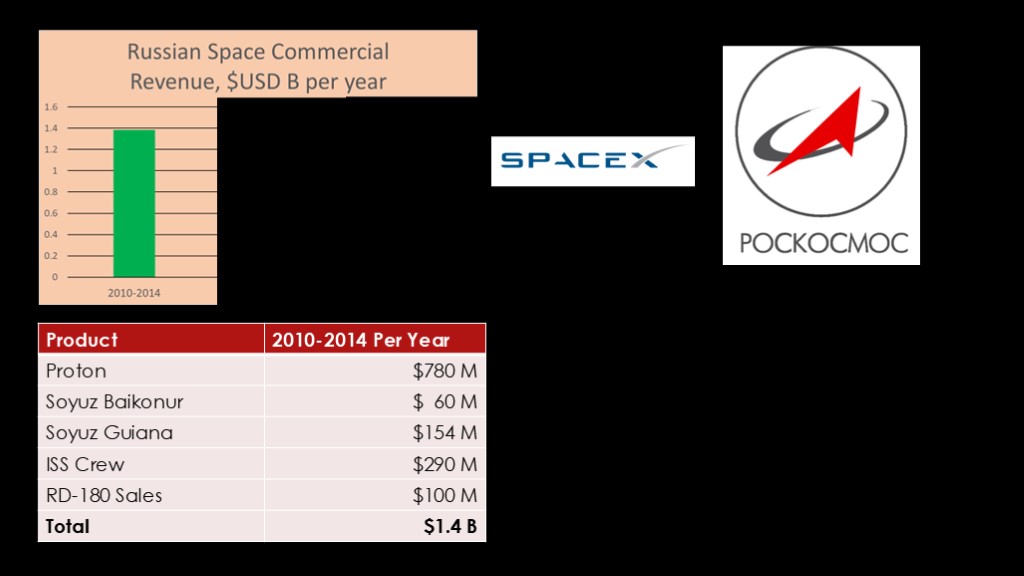
Here's a fiscal update.
We'll start with the information from 2010 through 2014, where the Russian space industry was bringing in about $1.4 billion dollars a year in hard currency.
Roll forward to 2021, and we see that the revenue from Proton has disappeared, and that's primarily because of Falcon 9; the competitive price and high reliability of Falcon 9 simply pushed proton out of the market.
The revenue from flying astronauts to ISS has also disappeared, also because of Falcon 9 and crew dragon.
The sole bright spot is the revitalization of the Baikonur Soyuz launches with the one web deal.
Overall, in 2021 the amount of hard currency the program brought in was half of what it was in earlier years, and it's possible that the OneWeb launches cost less than $500 million.
Fast forward to 2022, Roscosmos has decided to cancel their launch deal with OneWeb, cancel any future sales of the RD-180, and suspend the Soyuz operations in Guiana, effectively killing off their commercial space program.

If you enjoyed this video, please write an ode to it